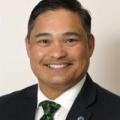Hackensack Meridian Health shows the benefits of telepsychiatry

Photo: Hackensack Meridian Health
Addressing the increasing need for behavioral health services is a nationwide challenge. With a shortage of physicians to address the growing need for care, a lack of providers who accept Medicaid, and access issues due to transportation or office hour challenges, healthcare organizations are looking to technology to help bridge the gap.
"Without the utilization of telehealth, patients arriving at an emergency department often have long wait times before meeting with an available physician, creating a strain on social workers and other members of the behavioral healthcare teams inside hospitals," said Dr. Eric C. Alcera, network medical director/Hackensack Meridian Behavioral Health, and chief medical officer at Preferred Behavioral Health Group, among other positions.
Expediting treatment time
"The implementation of a telepsychiatry program expedites the treatment time for a patient presenting in the emergency department in crisis," he continued. "Utilizing a Chromebook and HIPAA-compliant communications platform such as Zoom or Google Meets, team members can reach a Hackensack Meridian Health psychiatrist who can diagnose, prescribe and provide recommendations on next steps for patients."
The implementation of the telepsychiatry program has been a tremendous asset for the health system in getting patients in need of immediate behavioral health treatment access to a physician.
"Telepsychiatry has been an invaluable tool as we face an ever-growing behavioral health crisis."
Dr. Eric C. Alcera, Hackensack Meridian Behavioral Healt
"As Hackensack Meridian Health continues to add additional psychiatrists to its network to increase the ability for patients to secure in-person appointments, telepsychiatry has been an invaluable tool as we face an ever-growing behavioral health crisis," he noted.
When a patient presents to the emergency department in crisis, clinical and behavioral healthcare teams immediately jump into action, treating and stabilizing the patient if there are any medical needs before evaluating the patient to determine next steps behaviorally.
Calling the psychiatrist
"If it is decided that a patient needs further care beyond that of the social worker, the equipment is rolled to the bedside and a licensed psychiatrist is called," Alcera explained. "The psychiatrist, who is able to visually see and interact with the patient, will then determine how best to proceed in their care and treatment."
Hackensack Meridian Health reports the program has been very successful. In the fourth quarter of 2019, there were 7,430 in-person psychiatry visits and no telepsychiatry visits. By comparison, in the fourth quarter of 2020, there were 4,634 in-person psychiatry visits and 5,221 telepsychiatry visits, accounting for 52.98% of visits.
In the fourth quarter of 2021, there were 4,024 in-person visits and 6,726 telehealth visits, accounting for 62.57% of visits. And the numbers are continuing to grow, demonstrating the incredible need for and impact of this program, Alcera said.
The FCC telehealth grant program awarded Hackensack Meridian Health, based in Edison, New Jersey, $973,055 for laptop computers, tablets, a telehealth platform and remote monitoring equipment to provide behavioral health services in high-concentration COVID-19 hospitals, to ensure vulnerable and elderly patients remain safe at home while receiving required medical treatment, and to protect patients in skilled nursing facilities through consistent monitoring.
FCC funds for telehealth
"The FCC telehealth award funds have been used to implement the telepsychiatry program at our emergency departments and to implement a remote patient monitoring system, called VitalConnect, which monitors patient vitals," Alcera said.
"That program was rolled out at Hackensack Meridian Health nursing homes and rehabilitation centers and has been tremendously helpful, particularly throughout COVID," he continued. "The amount of time it took to don and doff PPE to get into patient rooms to check vitals meant patient care for another patient was impacted."
By using the remote patch monitoring system, the nursing teams were able to have confidence in the stability of their patients – and it helped to keep everyone safer, he added.
"The monitors are still used, particularly in the care of patients who may need to be monitored very closely, such as those recovering from open heart surgeries," he concluded.
Twitter: @SiwickiHealthIT
Email the writer: bsiwicki@himss.org
Healthcare IT News is a HIMSS Media publication.


























